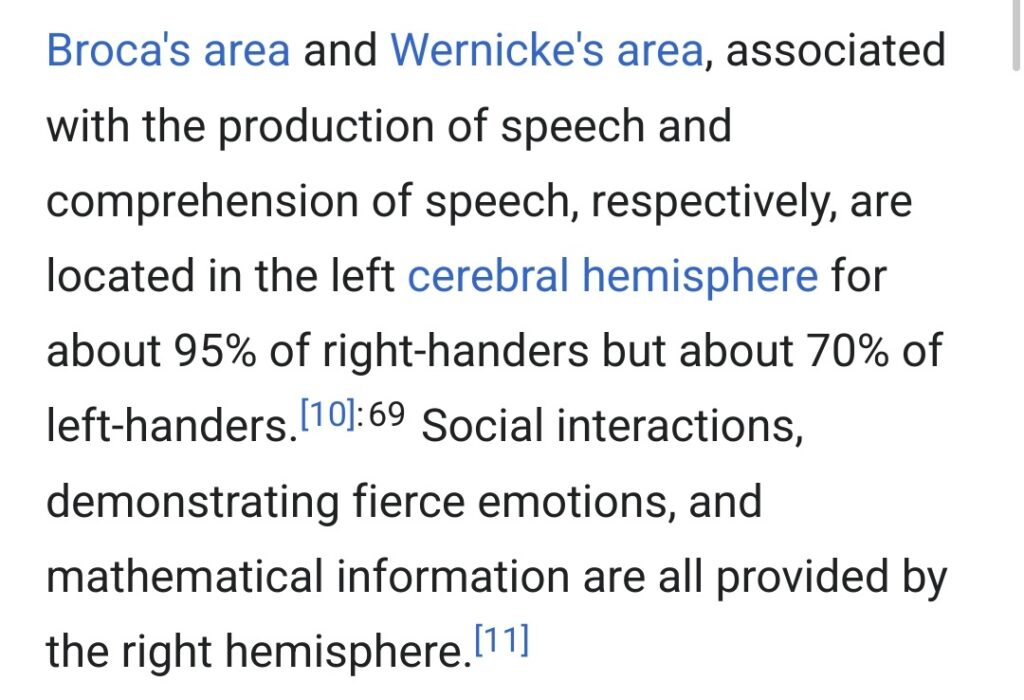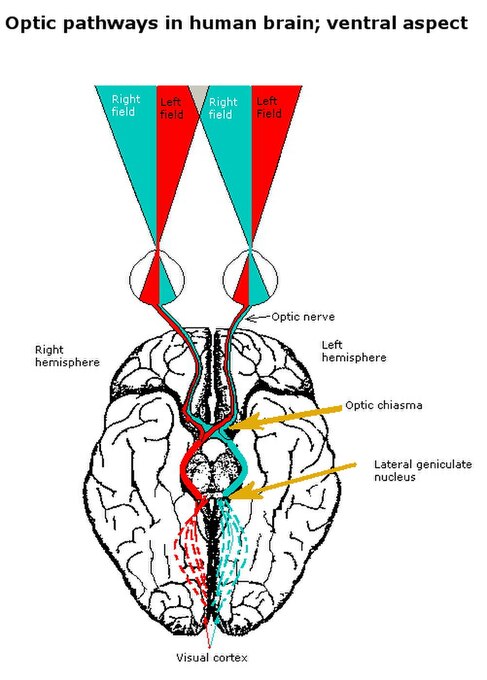Chapter 3 of Drawing on the Right Side of the Brain is all about the right/left differences in the brain. The R-mode and L-mode thinking were familiar to me: left is analytical, literal, symbolic, rational, linear; right is synthetic, analogic, spatial, intuitive.
Where I got more interested is the relation between left/right handedness and left/right brain modes. (Because I’m left handed.) The gist is there’s little real difference in L/R-mode thinking and left/right-handedness for a few reasons. First, motor control is not part of the brain most lateralized, it’s pretty much the same on both sides. Second, having the L/R lateralization swapped out mixed is kinda common. I was interested to read some wiki articles but not to chase down the original sources, but in the most bilateralized parts of the brain about 5% of right-handers and 30% of left-handers have those regions bilaterally or swapped.

That’s way more common than having the heart and lungs swapped left and right (situs inversus) which is 1 in 10,000.
Another cool thing – it’s not the case that the left eye send information to the right side of the brain. The left half of the visual field from each eye does too the right side of the brain with freeway interchange ramps.

I haven’t read Iain McGilchrist’s The Master and His Emissary but I’ve heard of it a few places and it’s mentioned in this drawing book. I might read it eventually. I’m curious whether it fits with other modes-of-thinking paradigms: Taoist doing/non-doing, Gallwey’s inner game, etc. System 1 and 2 from Thinking Fast and Slow seem to be at odds with this though, though I haven’t read that book either.
Leave a Reply